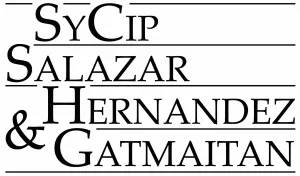- within Corporate/Commercial Law topic(s)
- with readers working within the Healthcare industries
The Supreme Court has issued Supreme Court Administrative Matter No. 20-12-01-SC (Re: Proposed Guidelines on the Conduct of Videoconferencing) dated December 9, 20201 (Court Videoconferencing Guidelines) to ensure that hearings via videoconferencing are conducted in an orderly manner and that the constitutional rights of the accused are protected. The guidelines, which took effect on January 16, 2021, 2 recognize that proceedings via videoconferencing have become an alternative to in-court proceedings.
A. Scope and Application
- The Court Videoconferencing Guidelines apply to all proceedings (at any stage) before the first and second level courts, Court of Appeals, the Sandiganbayan, and the Court of Tax Appeals.3 These will be in effect during the current public health emergency and thereafter, unless revoked or modified by the Supreme Court.4 The provisions of the Rules of Court will still apply during videoconferencing, except for the requirement that witnesses give their testimonies in open court.5
- A hearing may be conducted through
videoconferencing in any of the following instances:6
- Acts of God and human-induced events which restrict the physical access to courts, and other instances posing threats to the security and safety of the courts;
- Public emergencies as declared by the government;
- The litigant, witness, or counsel is unable to physically appear in court due to security risks, serious health concerns, vulnerability of the witness, or the fact that he or she is a victim of sexual offense or domestic violence;
- The litigant or witness is a high-risk Person Deprived of Liberty (PDL); 7
- The litigant or witness is a PDL or a Child in Conflict with the Law (CICL) held or committed in a facility;
- A government agency witness or an expert witness whose presence is necessary cannot attend an in-court hearing due to justifiable grounds;
- The litigant or witness is an Overseas Filipino Worker (OFW) or a Filipino residing abroad or temporarily outside the Philippines;
- The litigant or witness is a non-resident foreign national who was involved in an action pending in court while he was in the Philippines and wants to appear and/or testify remotely from outside the Philippines;
- There are compelling reasons warranting the resort to videoconference; or
- "[O]ther circumstances or grounds that may hereafter be declared by the Supreme Court as sufficient to justify the conduct of videoconferencing."
B. General Procedure
A summary of the pointers for the conduct of videoconferencing is provided below.
- How it is initiated – Videoconferencing may be ordered by the court motu propio (in case of an act of God (see part A.2(a) above), a public emergency (see part A.2(b) above), when a litigant or witness is a high-risk PDL (see part A.2(d) above), 8 when a litigant or witness is a PDL or CICL in a facility (see part A.2(e) above), or other circumstances as determined by the Supreme Court (see part A.2(j) above)) 9 or upon a motion duly filed and served. 10 Scheduled videoconferencing hearings cannot be cancelled except on meritorious grounds.11
To read the full article, please click here.
Footnotes
1. Supreme Court Administrative Matter (A.M). No. 20-12-01-SC (Re: Proposed Guidelines on the Conduct of Videoconferencing) dated December 9, 2020; https://sc.judiciary.gov.ph/16099/; last accessed at 11:13 AM on January 12, 2021.
2. Court Videoconferencing Guidelines, XI; The Guidelines were published in Philippine Daily Inquirer and Philippine Star on December 29, 2020.
3. Court Videoconferencing Guidelines, I.3(a) and 3(b).
4. Court Videoconferencing Guidelines, I.3(c).
5. Court Videoconferencing Guidelines, I.1(f).
6. Court Videoconferencing Guidelines, I.3(b).
7. Court Videoconferencing Guidelines, I.2(e). A high-risk PDL is one who is: "(i) charged with violation/s of laws penalizing terrorism and terrorism-related offenses; (ii) charged with violation/s of laws penalizing crimes against international humanitarian law, genocide, and other crimes against humanity; or (iii) considered a 'high-value target' because of the considerable threat he or she poses to the security of the jail facilities, the court, or the community, the risk of escape or attempted escape, and other safety and welfare considerations in transporting him or her to and from the jail and courtroom [(e.g., suspected members of terrorist groups, and drug and other organized crime syndicates)]."
8. Court Videoconferencing Guidelines, II.1. High-value targets are excluded from the enumeration as they are required to file a motion.
9. Court Videoconferencing Guidelines, II.1.
10. Court Videoconferencing Guidelines, II.2.
11. Court Videoconferencing Guidelines, II.4.
The content of this article is intended to provide a general guide to the subject matter. Specialist advice should be sought about your specific circumstances.



